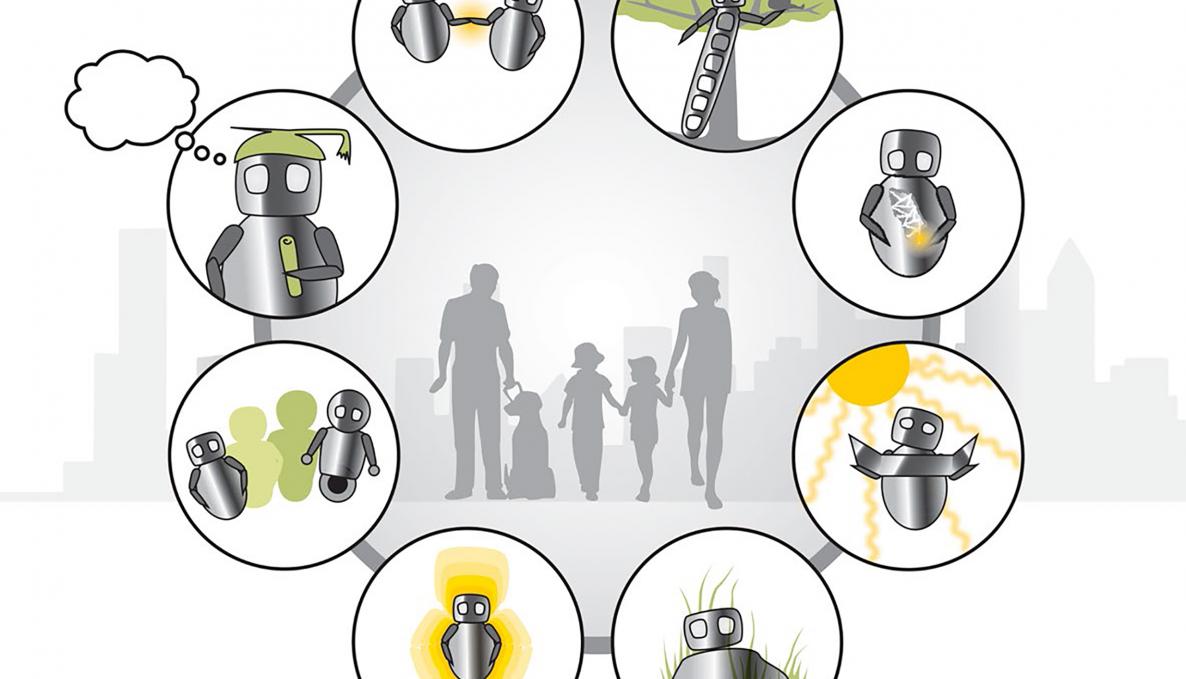what kind of robots will be used in the future? FUTURE BIONSPIRED robots will be sustainable. They will be built with recyclable, biodegradable, or biohybrid materials

What kind of robots will be used in the future? Future robots can tackle the challenge of Nano innovation? Can they interact safely with humans and the environment? Barbara Mazzolai, director of the IIT (Italian Institute of Technology) Micro-Robotics Centre and Professor Cecilia Laschi from the Sant’Anna School Biorobotics Institute, answered these questions in their paper “A vision for future bioinspired and biohybrid robots” published in the Science Robotics journal. In the future, bioinspired and biohybrid robots will respond to green technology and sustainability needs. They will find their (renewable) energy sources and have a net zero carbon footprint.
To comply with the United Nations 2030 Agenda for Sustainable Development, future robots or the transformative and disruptive potential of rapid technological changes must deliver progress and global development. The potential of new technologies is being leveraged by the healthcare, agriculture, manufacturing, energy, and other sectors, to enhance efficiency, improve powers of prediction, optimize resource allocation and contribute to the fulfilment of sustainability commitments. Barbara Mazzolai and Cecilia Laschi propose a disruptive new paradigm of movement in robotics inspired by the moving-by-growing abilities of plants and animals. Their EU funded projects Octopus (a soft manipulator modeled on the characteristic muscle structure of the octopus) and GrowBot (low mass and low-volume robots capable of anchoring themselves and climbing through the perceived external stimuli) show robots as bioinspired machines that can grow and adapt through three connected processes: growth (changes in mass), remodeling (changes in material properties), and morphogenesis (evolution of the shape).
This bioinspired approach to robotics cannot be limited to a copy of organisms proposed by nature but, rather, should rely on understanding and extracting principles. Living organisms are complex, much more so than our robots. They operate in a dynamic world that is considerably more complex than the robot-adapted structured environments. Such complexity is what provides organisms with effective and efficient sensory-motor behavior. A more global strategy and a multidisciplinary approach in bioinspired robotics will identify the key principles and models that can be used for designing bioinspired robots. Future robots will be able to face the complexity of the real world, without requiring simplifications to make the environment suitable for them.
In robot design, future robots will be an integrated system: the bodyware will be based on multifunctional materials and biohybrids that interact with the environment and are fully integrated in natural ecosystems. Distributed sensors will provide robots with rich perception and understanding of complex world models to move and act in a way that preserves organisms and the planet. Cognitive abilities will make them understand the environment and humans to behave meaningfully. In line with recent trends in robotics research, future approaches will reverse the Going beyond evolutionary robotics, robot morphology will adapt to the task and the environment at the design stage moving from wellness to wellbeing.



